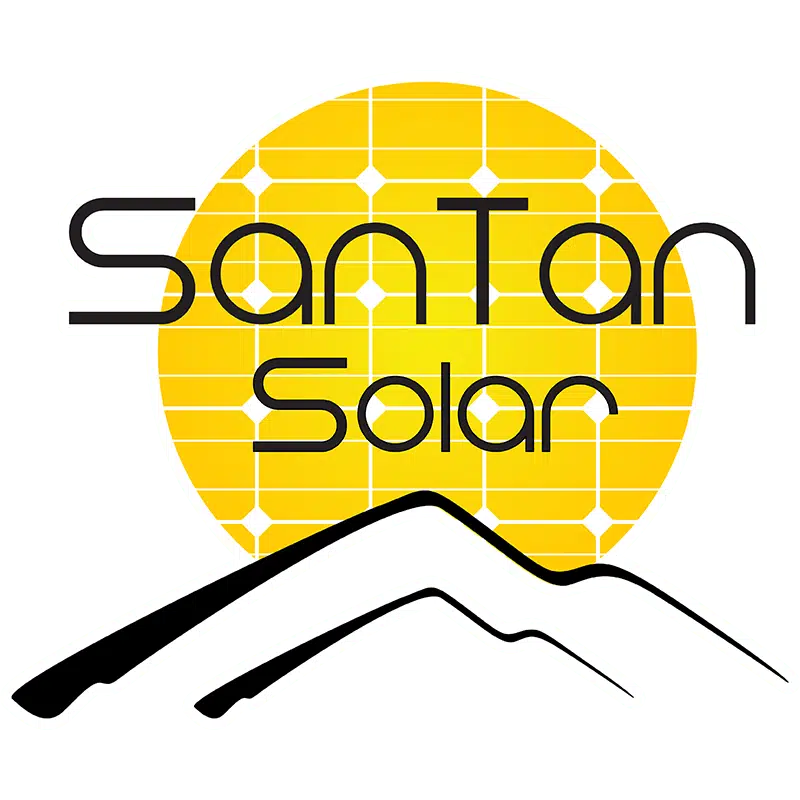Introduction
Many beginners start their research into solar power with the goal to power their homes with solar panels. While this is a fantastic end goal for most consumers, it sometimes leads solar users to overlook useful small-scale implementations of solar power.
The following projects can give a new solar power user important experiences before they make the leap to powering their entire home with solar energy. We’ll be sharing a few of these common clever uses for solar power that you can implement with relatively minimal experience and oversight.
All of the pictures in this article were sent to us by customers of SanTan Solar, so these are real projects that you can really do!
Solar Panel Kits
We’ll be powering each of the projects below with a solar panel kit like the one linked below:
https://www.santansolar.com/product/1-250w-solar-panel-kit/
Before we begin, we’ll be giving a brief description of the important pieces of this kit.
The Solar Panel is the central piece of this kit. The panel is what we set out in the sun to gather solar energy needed to power your solar appliances. It’s understandable for newbies to want to simply connect your panel to your appliance or a 12V battery. After all, solar panels give energy, right? However, most applications need a specific voltage or they’ll be damaged or non-functional.
If we want to store solar energy in batteries, we have to be extra careful. Lead-acid batteries are designed to only accept a certain size of charge, shouldn’t be overcharged, and shouldn’t be discharged to less than half-capacity. How do we ensure that all that happens? We do that with the second important part of the kit:
The Solar Charge Controller is placed between our solar panel and battery or appliance. The solar charge controller ensures that only the appropriate voltage is allowed to pass through from the solar panels. The solar charge controller can also ensure that batteries are not discharged below safe levels.
Depending on your application, you may need to purchase an additional Battery, not included in this kit. There are several types of batteries, from lead-deep cycle to 6-volt golf cart batteries, to expensive lithium batteries. To read more about batteries or the parts of your solar kit, you can read our articles here:
Recharging Your Power Tools
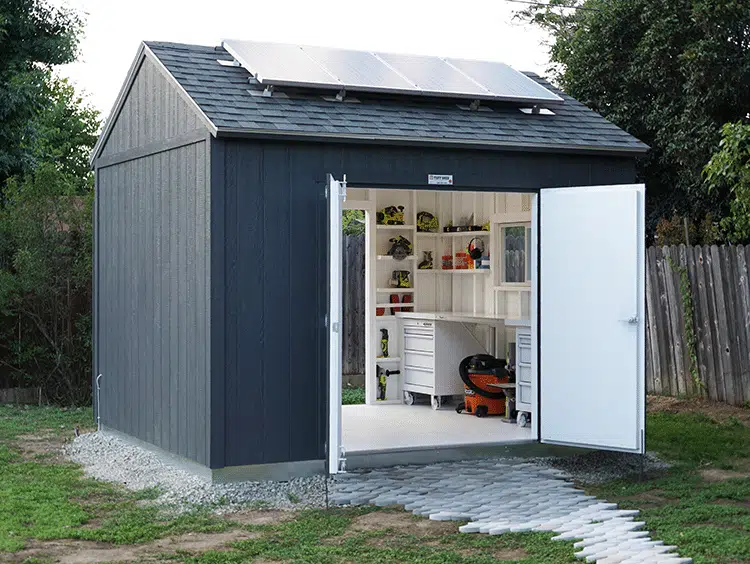
A relatively simple solar setup in a shed or garage can ensure that your power tools always have fully charged batteries, regardless of the electrical grid’s status. To charge your power tools, we’ll need to add one extra piece of equipment, an Inverter. Inverters take the direct-current(DC) energy from your battery and convert it into the alternating-current(AC) that most outlets use.
With this setup, you can install your solar panel to the roof of your shed, then pass wires inside the structure to your solar charge controller. From there, you can pass the wires through to your battery and inverter. Not all inverters are created equal, so be sure to buy one that can handle the power load that your battery charging station will draw.
Freeing Your RV From Campsites/RV Boondocking
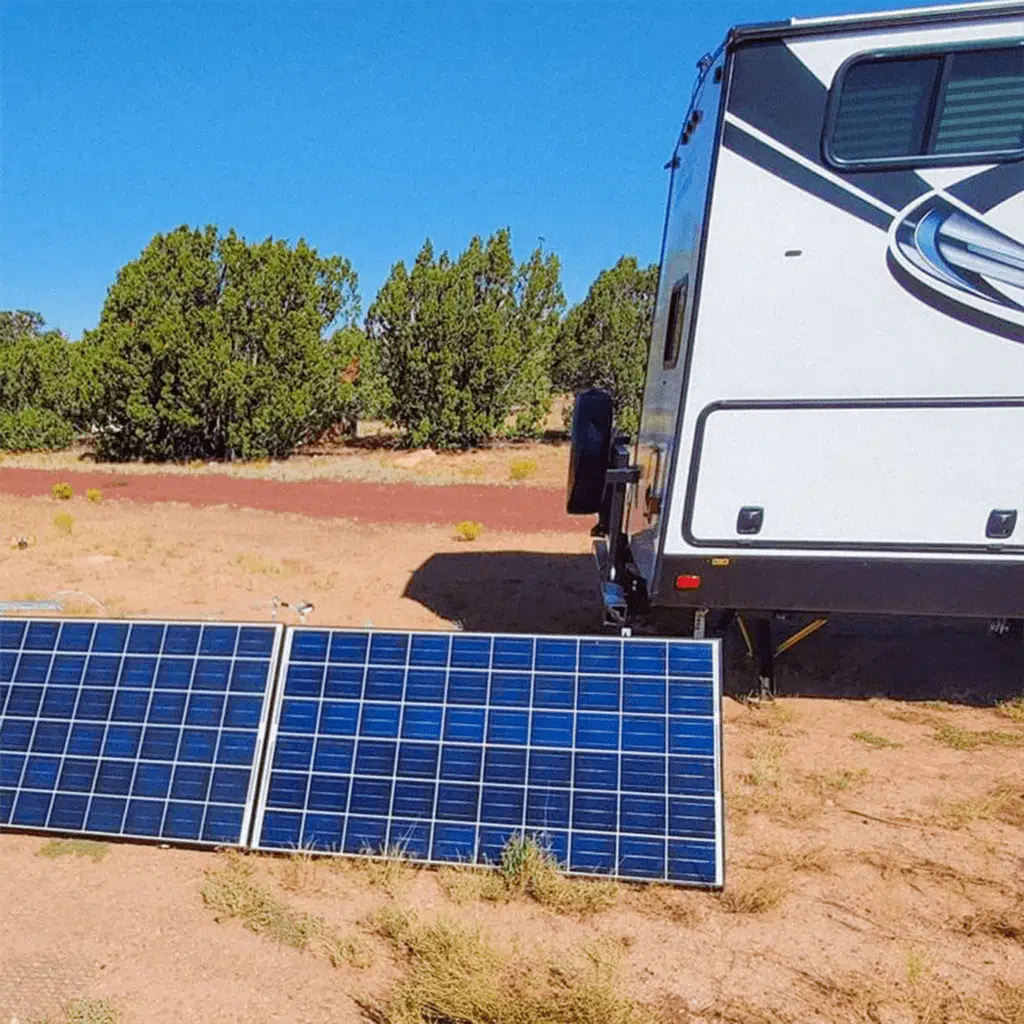
One of the most common and useful applications for solar power is installation into RVs. Most RVs typically contain two kinds of batteries. 12-volt car batteries, used for the engine and headlights, and 12-volt lead deep-cycle batteries for everything else. Car batteries are designed to deliver huge amounts of power all at once (like for turning over the engine.) Lead deep cycle batteries are used to power all of the appliances inside an RV.
The capacity of an RV’s deep-cycle battery is typically the limiting factor for “boondocking” away from campsites in an RV. While an RV’s water tanks can provide water for up to two weeks, it’s not uncommon for an onboard deep-cycle battery to only power appliances for two to three days. Solar panels can greatly extend the amount of time your RV can stay away from hookups.
RVs have a few advantages over other solar setups in that they already contain several important pieces of equipment. Because your RV’s battery runs on 12 volts of direct current, most RV’s will include an onboard inverter to provide 120V of alternating current to your microwave, TV, or outlets.
This inverter typically is connected to a set of circuit breakers to increase safety. It’s possible to tap into these electrical lines with your solar setup to provide free recharging with solar power.
The first step to incorporating solar power into your RV is to install the panels. Most people choose to install the panels on top of the roof, occasionally incorporating frames that can tilt to better catch sunlight.
After the panels are installed into the roof of the RV, the wires should go to the solar charge controller. This should be placed somewhere easily accessible so you can check the battery level and the current flowing from your panels to the RV.
After you’ve connected your panels to the solar charge controller, you should wire them to your battery bank. There are various ways to accomplish this that vary depending on the location and setup of your specific model of RV. Check the schematics for the best places to make contact with either your battery bank or wires connected to your battery bank.
Be sure to incorporate extra breaks for safety. You’d rather go through the headache of switching a fuse than the headache of an electrical short and potential fire!
Solar Pool Pumps
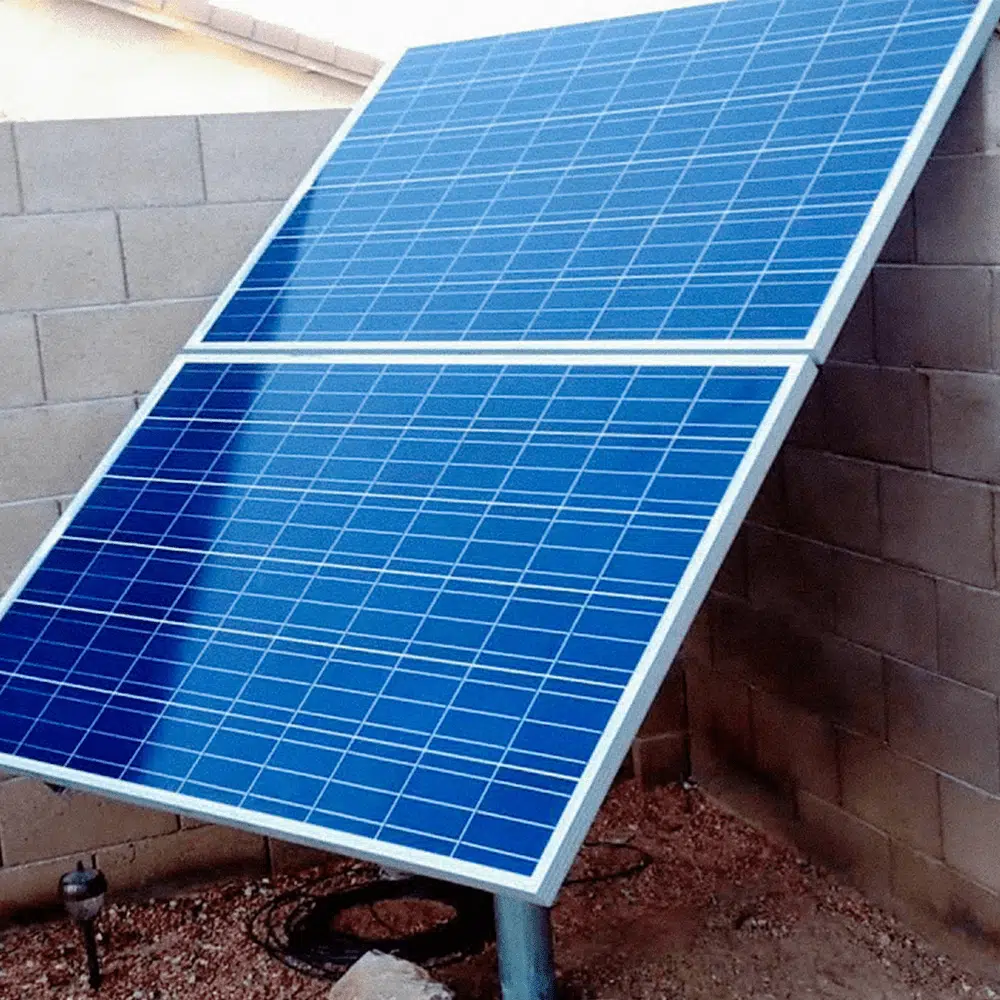
Another common use for solar power is to use it to power pool pumps. A pool pump that doesn’t draw any extra power from the grid will save you money in the long term. If you have a modern pool pump, especially one that was designed to work with solar power, switching to solar power will save you on your monthly electric bill.
Many solar pumps run on direct current (DC), so no inverter is needed to connect them to your solar panels. You should be sure to use a solar charge controller to limit the incoming voltage, however. Solar panels can give off variable energy when it’s cloudy or raining, so it’s important to check that your pump won’t break or wear out when supplied with variable energy.
Obviously, your pool pumps won’t work at night. However, most pools will stay clean with pumps that work over the course of a sunny day. You’ll also find that your pool pumps will work for more hours during the longer summer days, which is convenient as your pool will see greater use during the hot summer.
Solar Powered Golf Carts
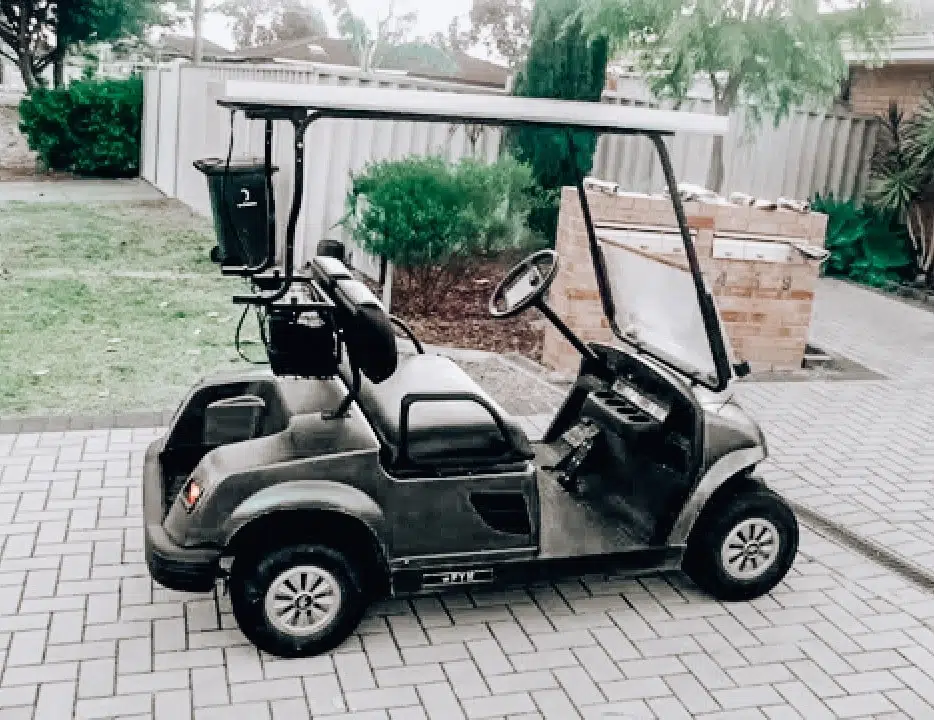
If you’ve ever been on a college campus or a large ranch, you know how convenient a golf cart can be for quickly getting around. Golf carts are used for the transportation of people and materials in a wide variety of locations and settngs around the country. They’re used by security patrols, farmers, and camp counselors.
Adding a solar panel or two to the roof of your golf cart can greatly extend the battery life between charges. While a fully-charged golf cart typically has a range of 30-45 miles before needing a recharge, a golf cart with a solar panel setup has theoretically infinite range (provided you let it sit in the sun between uses!)
Golf carts are great candidates for solar systems because they run on a direct current (DC) system. As before, we’ll need our panel, a solar charge controller, and connections to the golf cart’s battery bank.
Our solar charge controller will regulate our charging voltage depending on your golf cart’s rating. Some carts operate at 36 volts, and some at 48 volts. You’ll want to make sure your charge controller is rated for the appropriate voltage.
After installing your solar panel(s) onto the roof of the golf cart, run the wires down to the battery bank. Connect them to your charge controller, then onto the battery bank’s positive and negative leads.
Solar Powered Air Conditioning
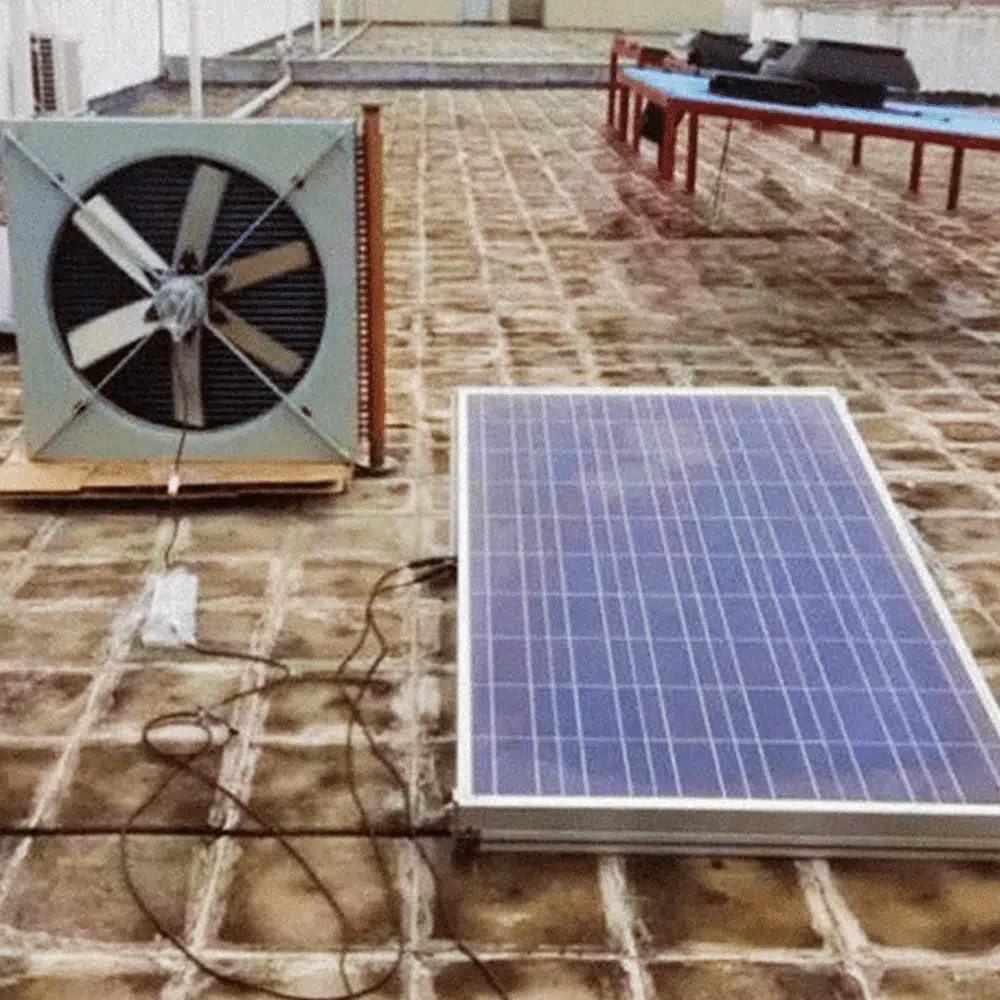
While solar-powered air conditioning technology has massively advanced in recent years, it’s still a relatively new technology. The main issue is that air conditioning units require a lot of energy to function. That means that, unless you’ve invested in a significant battery bank, you’ll likely only be able to power your air conditioning units during the day. In some climates where nights are cool, this may not be a terrible idea.
Luckily for the rest of us, there are hybrid air conditioning units. During the day when energy is most expensive, hybrid air conditioning units draw their power from solar panels. When night falls alongside energy costs, these hybrid units draw their power from the electrical grid to continue cooling your rooms.
These hybrid units are still a relatively new and expensive technology. If you’re planning on investing in these units, it may be in your best interest to look into powering your entire home with solar power. You can read more about powering your home on-grid by reading our article here:
Conclusion
For many beginners, planning out a small project like the ones listed above is a great way to dip your toes into solar energy. Installing a few panels onto your shed will allow you to power your power tools alongside some LED lights, and will teach you how the different pieces of equipment interact. Connecting a solar panel to your pool pump or golf cart will lower your energy costs and, in the case of the golf cart, extend the time between recharges.
Once you’ve learned a few things about solar power, a larger project would be to install panels onto the roof of your RV. This will allow you to dry camp and leave the civilized world behind without worrying about your microwave or TV running out of juice.
Before starting any of these projects, we highly recommend searching for a video tutorial or reading one of our guides. If you don’t know what you’re doing, it’s better to spend a few hours learning rather than getting shocked. We like to say measure twice, cut once.
Ready to get started? Check out SanTan’s Solar Kits and Solar Panels once you’ve decided which project to try:
